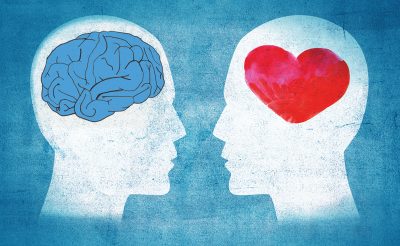Bridging the digital delight gap

Australian companies have become far better at satisfying the basic needs of consumers when it comes to the digital experience, according to a recent report. However, the next challenge is for them to work out how they can create a user experience that forges deeper connections with their customers.
A recent study commissioned by software solutions provider SAP highlights the improvement Australian companies and brands have made in making consumers feel that the basic requirements of the digital experience, such as security, accessibility and usability are being met.
At the same time, the study also illustrates that elements of the digital experience more aligned to the emotional connections between consumers and brands are still in need of work: companies are winning the battle for minds but still struggling winning over our hearts.
The SAP ‘2016 Australian Digital Experience Report’ surveyed 3,500 consumers in relation to 9,000 digital interactions across seven industries, with consumers asked to rank interactions based on fourteen different user experience categories.
One of the most important tasks in getting consumers comfortable with the digital and online experience has been to satisfy issues around trust in regard to privacy and security.
The headline finding from the study is that the digital performance of Australian companies is getting better, but consumers are far from delighted or inspired by what they get, and the report’s authors say consumers are quick to click and find a better experience.
"In today’s one-click economy, consumers demand more every day — better convenience, greater control, and instant satisfaction. If a brand can’t deliver it, the consumer will find another that can," the report says.
Rising customer expectations mean that companies and brands have to deliver a digital experience that at the very least satisfies expectations around the basic categories of security and reliability. However, to truly stand out and delight, companies need to be ahead of the curve when it comes to expectations.
What has been shown time and time again is if brands aren’t ahead of the curve, one of their competitors almost certainly will be in this current climate of digital disruption. And if it’s not from a direct competitor in your industry, it will be a start-up looking to take a cut of your market, or a company from another industry coming in and shaking things up.
One of the things we’ve seen with the transformation of industries through digital technology is that it has redefined market boundaries. Digital technology has made it easier for companies to become more flexible about the products and services they offer as well as the markets they target. It’s what business academic Clayton Christensen has identified as disruptive innovation — companies creating new markets and values by redefining the problems consumers want solved.
This phenomenon has made customer loyalty an even more fluid concept. Doing the basics is no longer enough; having a website and an app is the new norm; companies have to step up and personalise these digital properties in order to connect with consumers and win their loyalty.
One of the most interesting takeaways from the study is the big gap between the high scores recorded for what we could call ‘head’ attributes of the digital experience such as security and reliability and those recorded for what we could call ‘heart’ attributes like uniqueness, excitement and individuality.
This makes sense to a large degree, as one of the most important tasks in getting consumers comfortable with the digital and online experience has been to satisfy issues around trust in regard to privacy and security. One of the biggest obstacles to mass uptake of online commerce, for example, was to convince consumers their credit card details were safe.
Companies have worked hard over the past decade to sure up their security and give consumers a stronger privacy framework. It’s still very much an evolving project (and unless criminals and hackers suddenly disappear overnight, always will be) but the progress made can be seen by the high ratings consumers have given for security and accessibility.
It’s a different story in the study’s categories of ‘makes me feel unique’, ‘excites and engages me’, and ‘makes me feel important’, which are the three categories in which companies were rated lowest by consumers.
These are the ‘heart’ categories; the areas where companies have the opportunity to differentiate themselves and really make a pitch for the loyalty of customers. It’s in these categories that forward-thinking companies will be looking to improve and move ahead of their competitors and go above and beyond the expectations of their customers.
This is where the gap is really opening for companies and brands: can your digital experience connect and delight your customers?
Thanks to the advances made mainly by third party providers in the ‘head’ categories such as security and usability, companies now should be able to offer consumers a bedrock digital experience that’s safe and reliable (if a little boring).
Integrating this layer of ‘safe and reliable’ with ‘unique and delightful’ is the next challenging task for the digital C-suite and brand managers. The digital experience has to find its ‘heart’ if it is to win both the trust and the loyalty of consumers.